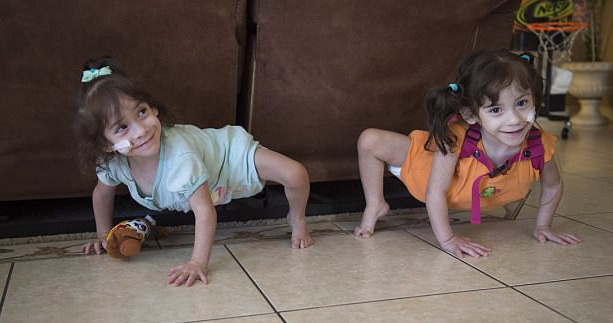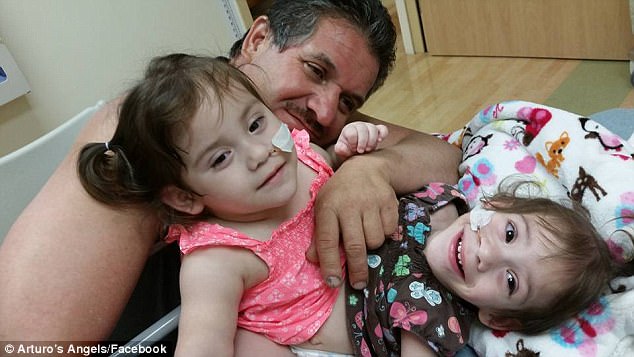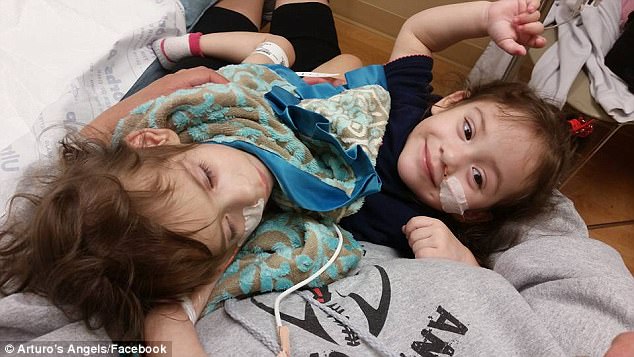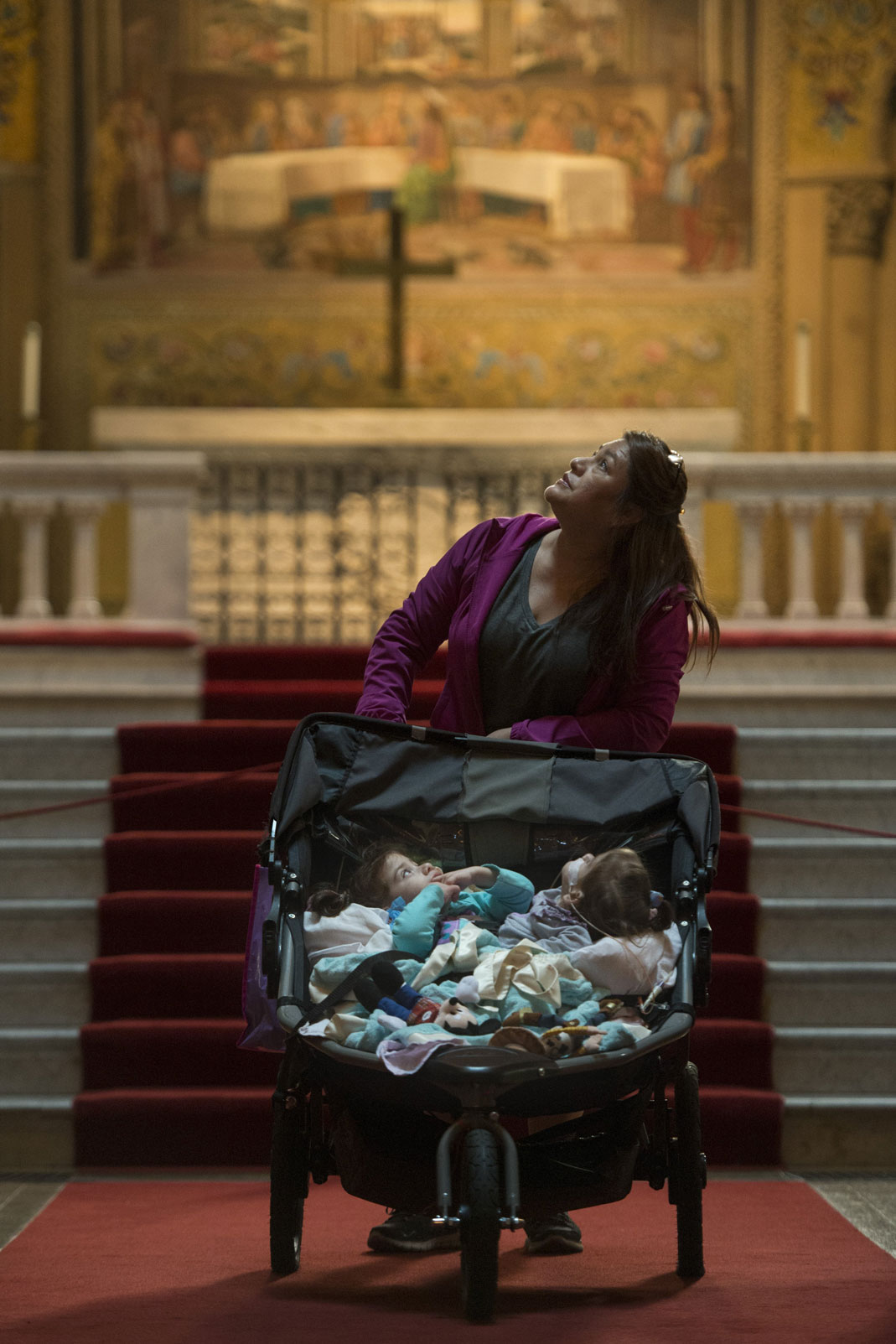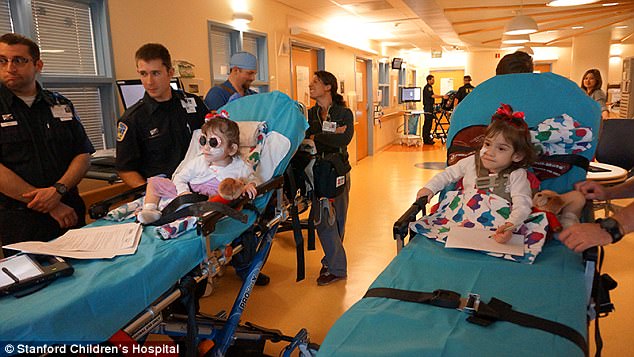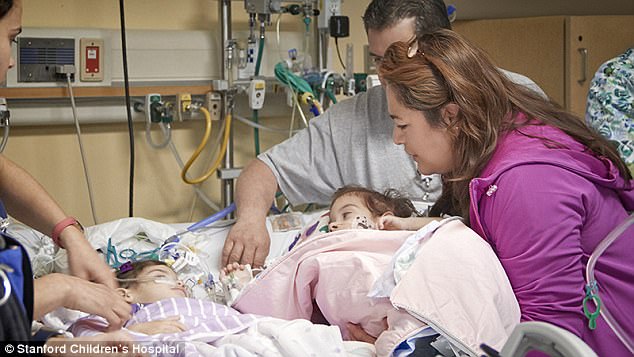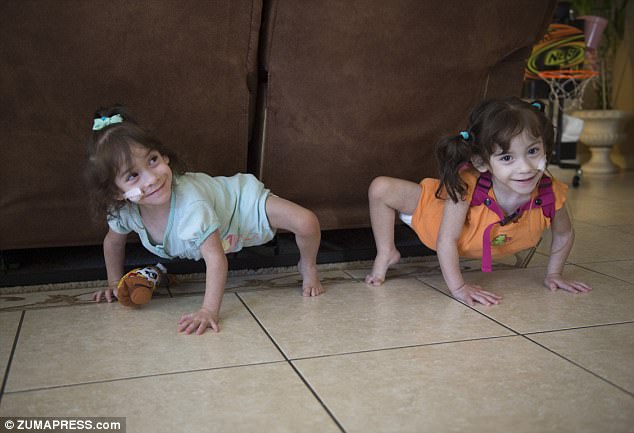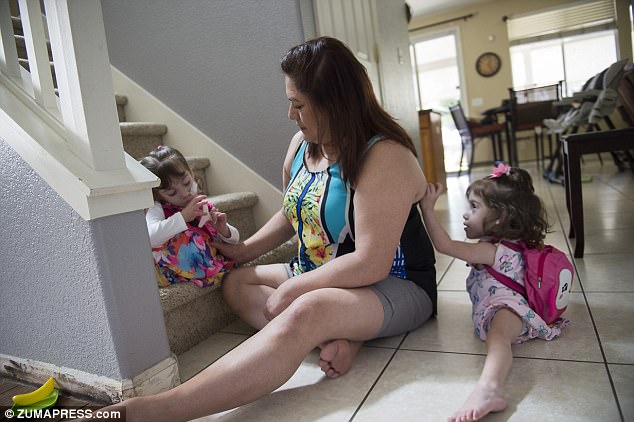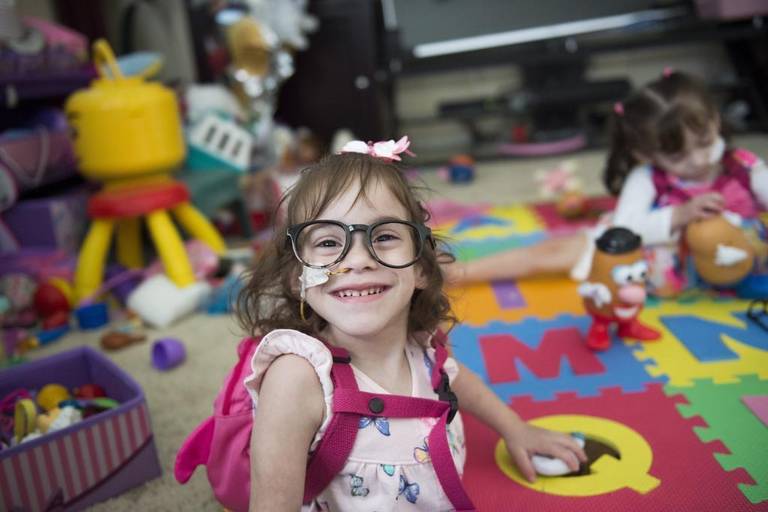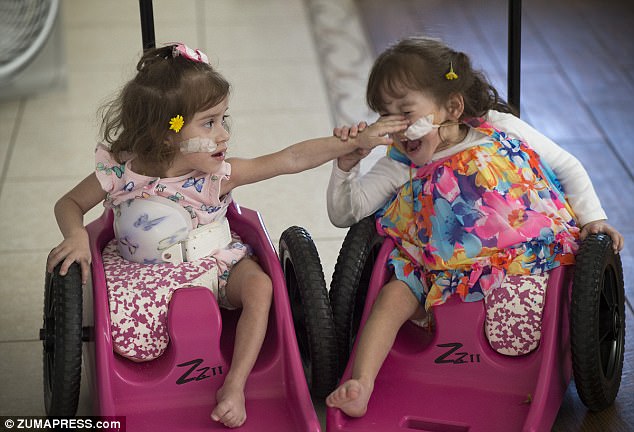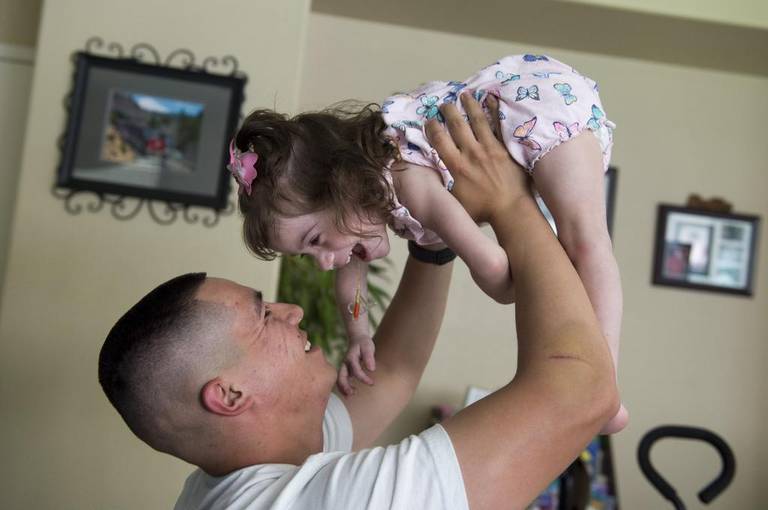Their surgery caught the attention and heart of the world, as a set of conjoined twins underwent a life-threatening operation to be separated.
On December 6 in Palo Alto, California the girls were operated on to untangle their digestive system, uterus, a liver, a bladder, a pelvis and a third leg.
Now, 7 months after their surgery the girls are flourishing.
"The whole conjoined thing is like a distant memory," their mother Aida told the Sacramento Bee. "I know they were at one time, but this is just our life now."
The path to surgery started years before when the girls would suffer countless infections causing Erika to become dangerously weak. After being hospitalized with dozens of urinary tract infections and countless cases of dehydration it became clear to their parents that they needed to separate the girls.
Before the separation, the twins' anatomy was like that of two people above the chest and gradually merged into one before the diaphragm. They had a total of 3 legs, one which was believed never to be functional. Tissue from the third leg was used as part of Erika's reconstructive surgery, so each girl now has one leg.
Continue to the next page to see how the girls are doing now that they have been separated.
When Aida and Arturo Sandoval surprisingly became pregnant when she was 44 and he was 49, they were urged to abort the girls.
Without hesitating the couple, who relies on their faith in God, went ahead with the pregnancy. Aida and Arturo already have 3 kids in their 20's, but life continued to be difficult for the family.
"I have faith in God, and I know that if it's meant to be, it will be," Aida said.
Before the operation, Erika was almost half the size of her sister Eva. This caused doctors to fear Eva was absorbing most of their nutrients. Now, Eva weights 20 pounds while Erika weighs 19 pounds 8 ounces.
Eva has a large intestine, a small intestine and a colon, while Erika has just a small intestine. It's unclear how doctors were able to separate the uterus. They each have one leg and have learned to move around on their own with the help of wheelchairs. Doctors believe that within a year, the girls will be able to stand and walk with a crutch.
The girls were discharged from Packard Children's Hospital a few months after their surgery and spent some time in a rehabilitation center closer to home in Antelope, California.
During the surgery and recovery time, Aida was forced to move to Palo Alto to be closer to the hospital with the girls, while their father stayed near their home to continue his construction work.
Now, they are back at home with their parents, life seems completely normal for the family.
"Having them separate, it's like the day-to-day for anybody with twins," Aida told the Sacramento Bee. "It's a wonderful feeling, just to be able to make sure two more little babies get to adulthood"
The sisters have participated in play therapy to help them adapt to psychologically being apart.
"Neither girl seems to have trouble adjusting," said Packard Children's child psychiatrist Michelle Goldsmith, MD, who has worked with the toddlers. "They're both rolling with what's going on very well."
Now that the girls are apart they are able to pursue their own personalities. Erika likes fixing things by hammering a plastic banana into walls and banisters, while Eva enjoys playing make-believe, serving everyone invisible cake and soda throughout the day.
Before they were separated, Erika would just follow what her sister did, often being dragged around by the stronger twin.
The evolution for Erika has been remarkable.
"She's her own person," Aida said. "Before it was just whatever her sister was doing. I love just watching them, learning their interests."
Since the girls were separated at such a young age, it's unlikely they will remember being conjoined.
"People will show them pictures and they'll have what we have from early childhood "“ reconstructed ideas of the way we were," Alice Reger, author of One of Us: Conjoined Twins and the Future of Normal.
"I'm definitely thankful that things turned out the way that they did," she said. "I know they're here with a purpose, they've made it this far. And what the future holds for them is just enormous," Aida said.
Sources: Sacramento Bee / Miami Herald / Daily Mail
